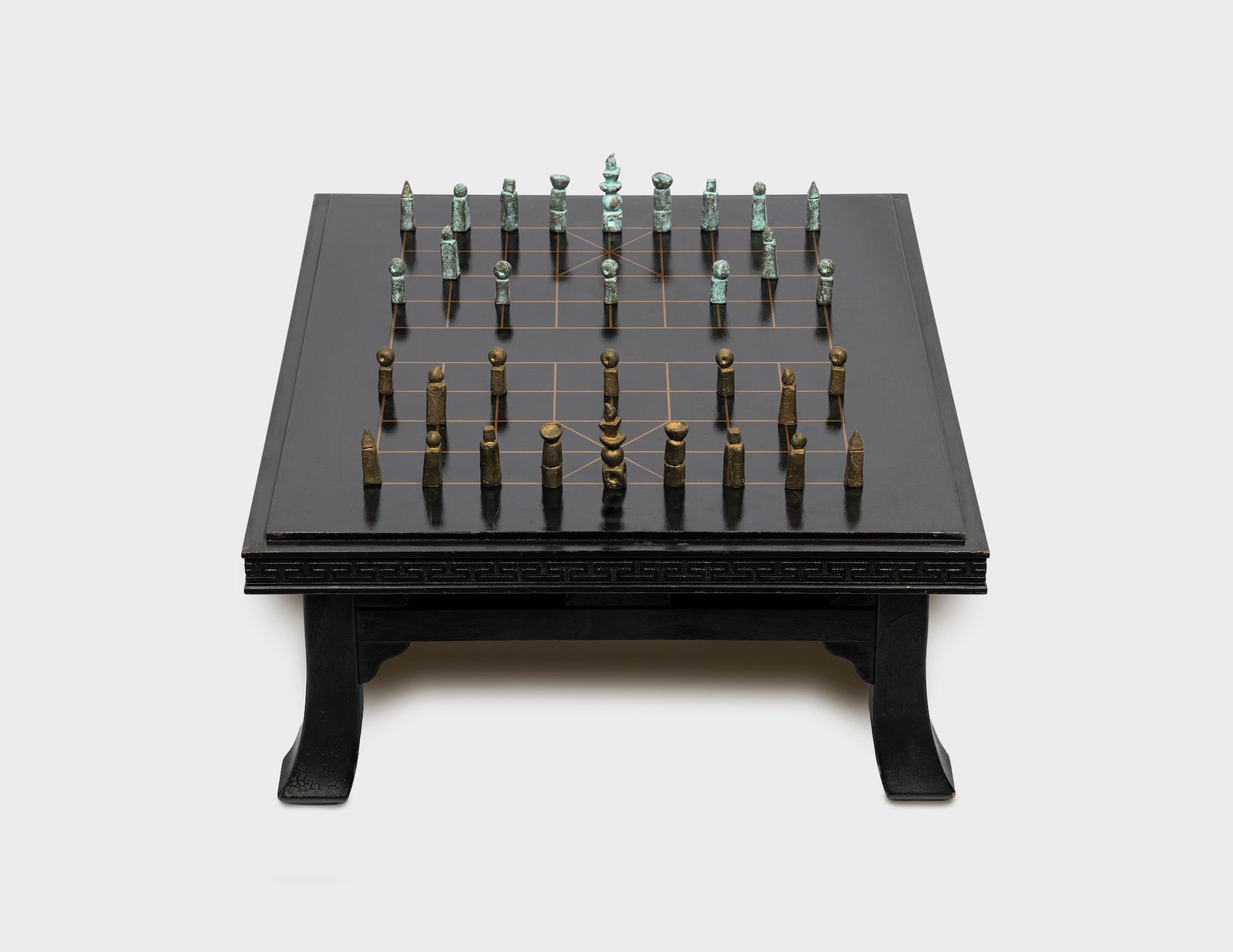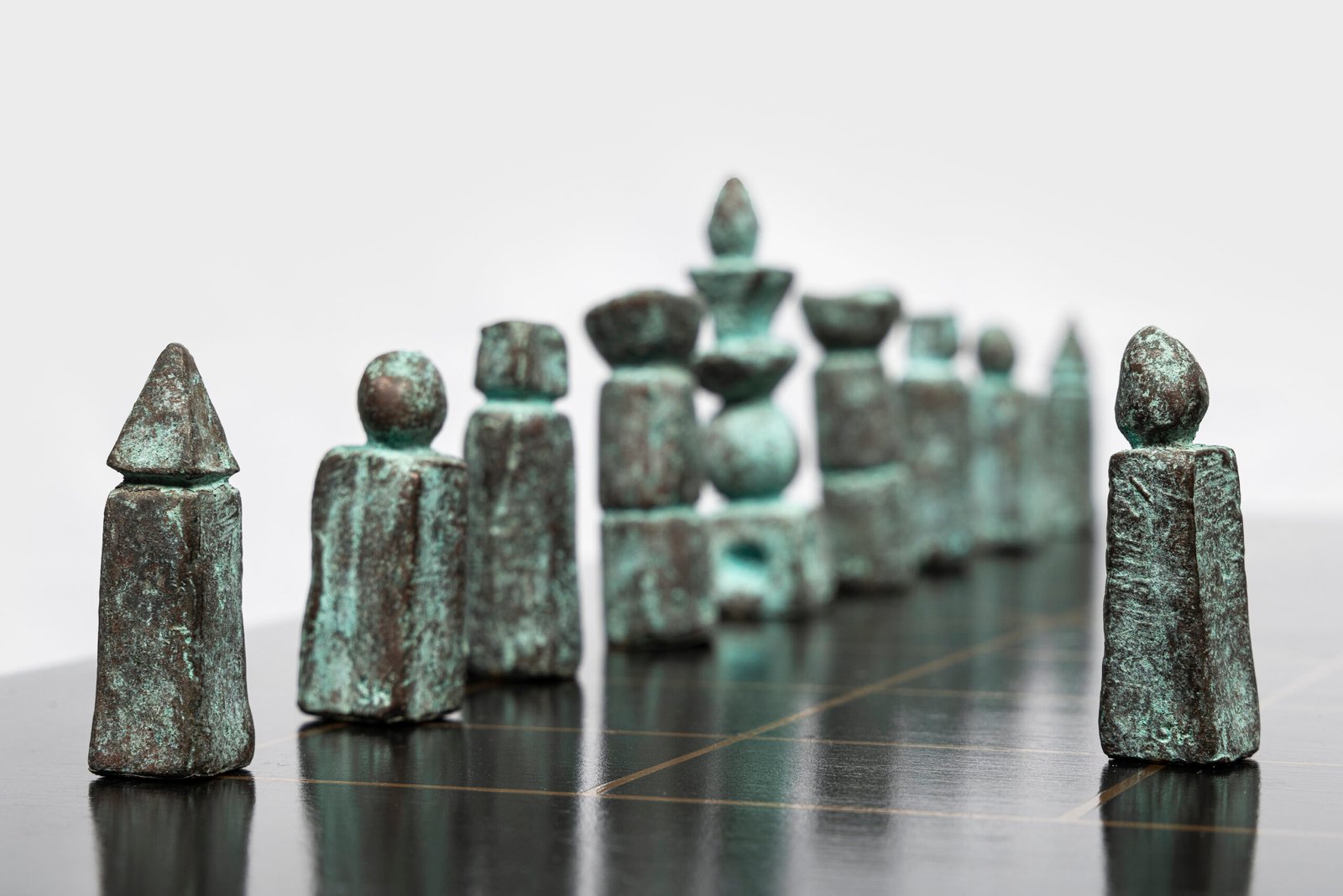32 bronze cast Chinese chess pieces and wooden chessboard
Chess pieces arranged on chessboard 70 x 60 x 7.5 cm
With later added stand and glass cover 70 x 60 x 53.5 cm
Provenance
Acquired directly from the artist by the present owner
Exhibited
World Chinese Chess Exhibition, Singapore Press Holdings News Centre, Singapore, 30 April – 8 May 1988
Literature
Tan Swie Hian. Singapore: Nanyang Academy of Fine Arts, 2001, pg. 413
A larger and later version of Chess of the Mind with ceramic instead of bronze chess pieces is installed in the permanent collection of Tan Swie Hian Museum.
Tan Swie Hian’s version of the Chinese chess is an outstanding unification of key Buddhist beliefs with the basic elements of Chinese chess 象棋.
It is based on the Buddhist concept of the six indriyas which are the six sense bases, or sense organs, that allow humans to perceive the world. They are namely: the eye and the faculty of seeing; the ear and the faculty of hearing; the nose and the faculty of smelling; the tongue and the faculty of tasting; the body and the faculty of sensing; and finally the heart or mind and the faculty of cognizing.
They correspond to the six gunas, qualities produced by the organs of sense and objects, also known as the six external bases or six dusts. They are namely: sight, sound, smell, taste, touch and idea, which take the places of the six basic pieces of the Chinese chess: adviser 士, elephant 象, chariot 車, horse 馬, cannon 炮 and soldier 兵.
What makes the six perceiving indriyas and the six perceived gunas combine to function is solely the mind, which is the general 將 in the game.









